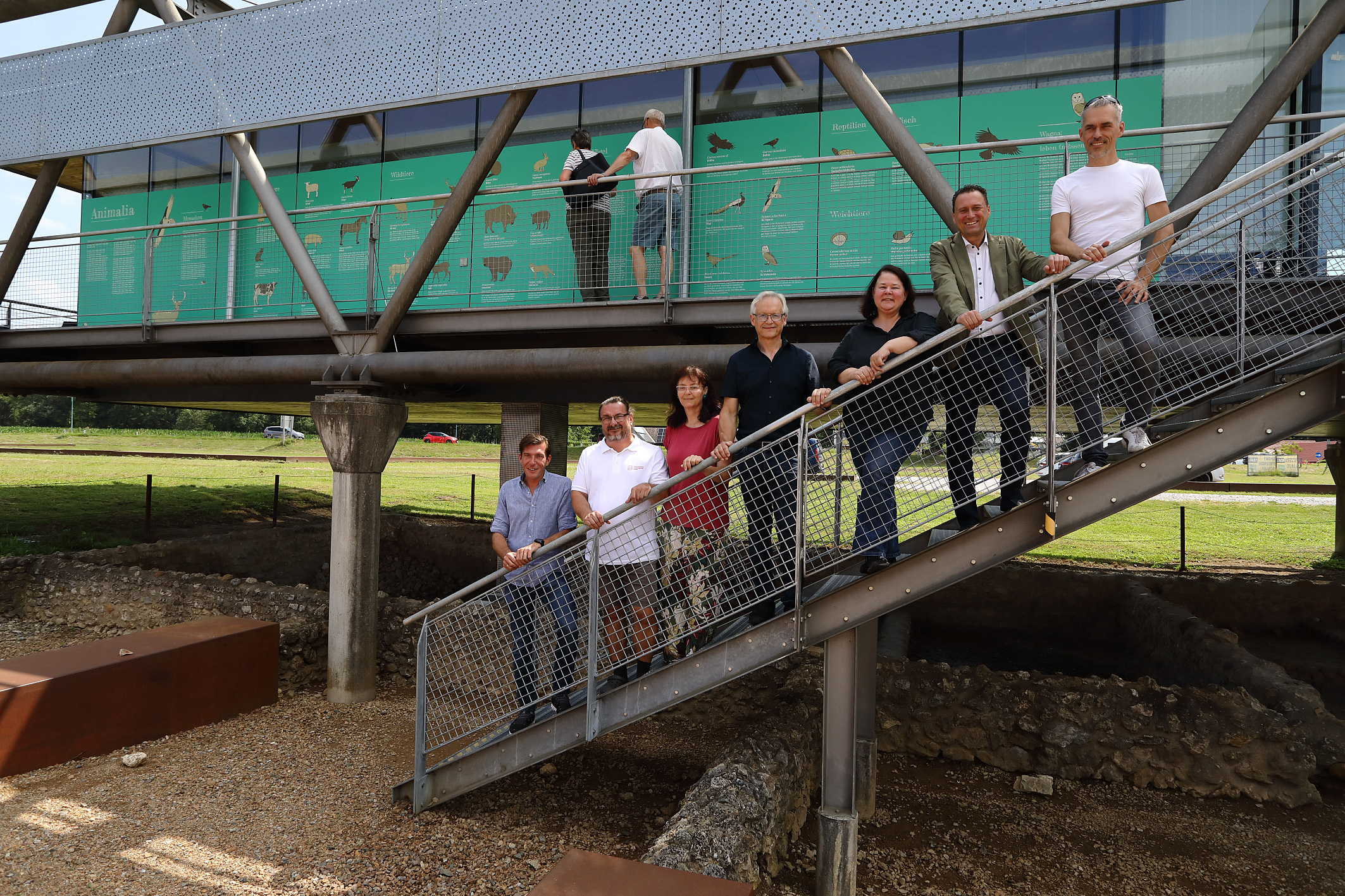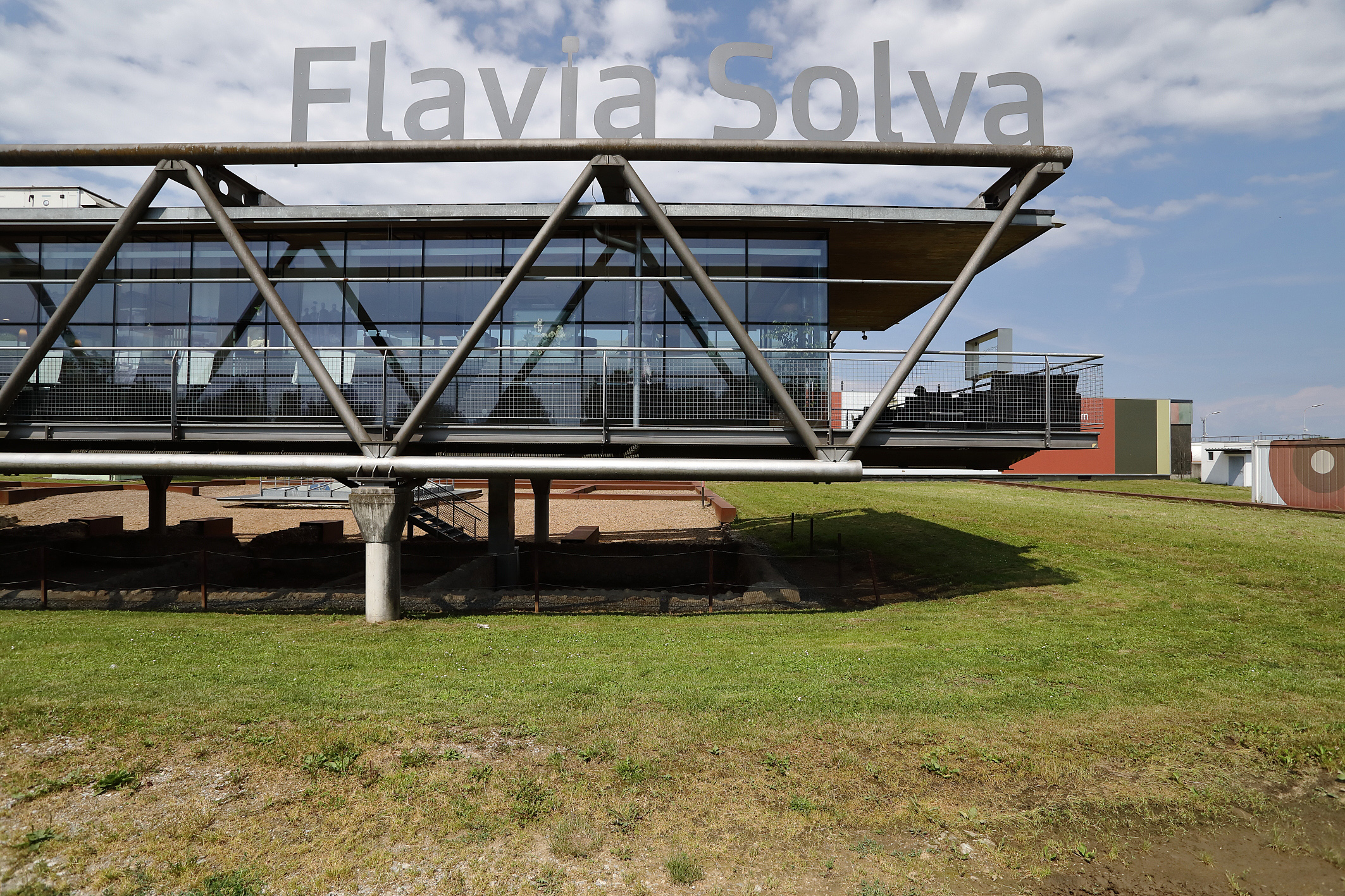Flavia Solva in the municipality of Wagna is the most important Roman archaeological site in Styria (Austria). A large part of the Roman province of Noricum was administered from this town. A new »showcase« now displays the animal remains found from over 100 years of excavations, as part of a cooperation between the Universalmuseum Joanneum and the Austrian Archaeological Institute of the Austrian Academy of Sciences.
New archaeological methods and their results
»Over the last 100 years, the interests of excavators have expanded,« explains Barbara Porod, Chief Curator of the Roman Provincial Collection at the Universalmuseum Joanneum. »In the beginning, the main focus was on finding and excavating archaeological structures. Pickaxes, shovels and wheelbarrows are still part of excavations today.« However, the technical possibilities have developed considerably. Remote sensing methods can be used to identify structures in the ground without having to dig it up. Today, excavations focus not only on monuments but also on reconstructing the living conditions at the time. Fine excavation techniques, such as sieving or sludging sediment samples, allow the smallest objects such as coins, fish bones or charred plant remains to be found, which complete the picture of the Roman diet. A hundred years ago, only human bones or special features such as deer antler were mentioned in the excavation diaries. Today, all animal remains preserved are kept analysed.
Animal remains in Styria and their significance
Alongside vegetable food, animal protein was an important part of the diet. In Roman Flavia Solva, animal bones and teeth document domestic animals such as dogs, cats, cattle, sheep, goats, domestic pigs, horses and donkeys as well as wild animals such as chamois, red deer, roe deer, beaver and bison. And fowl was exploited such as chicken, goose and peacock. The finds in Styria are being analysed in Vienna by archaeozoologists Alfred Galik and Martina Pacher from the Archaeological Institute of the Austrian Academy of Sciences.
Archaeozoology deals with the animal remains of human food such as bones, teeth, shells and snail shells. »These animal remains provide information about farm animals such as cattle, pigs, goats and sheep as well as other domestic animals such as dogs, cats, horses and donkeys,« says Alfred Galik, co-curator of the display window in Flavia Solva. The inhabitants of Flavia Solva also hunted big game such as chamois, red deer, roe deer, European bison, wild boar and brown bear. Small game such as beavers, hares and terrapins were also collected. Fishing played a role in Roman times, but so far only indeterminable fish remains and pike have been found in Flavia Solva. »Unfortunately, we still lack evidence of exotic animals for circus games from Flavia Solva, but this could soon change as part of the excavation activities of the Universalmuseum Joanneum,« says Martina Pacher.





